JustinGuitar.com uses cookies to enhance your browsing experience. By continuing to use this site, you consent to the use of cookies. For more detailed information, please review the full Terms & Conditions.
📖 Food For Thought by Justin Sandercoe is here—transform your musical mindset and elevate your guitar journey! Get your copy now; stock is limited!
Dominant Chords are commonly called 7th chords. Some might say they are the 6 essentials grips to play blues guitar - but they're also useful for many other guitar skills! Checking out some blues before will be a perfect vehicle for practicing them!
In this lesson, you'll learn all about the seventh chords. I'll take you through each of them & a couple of different variations to some of these dominant chords. Most of these are easy to remember and play, but there's a couple of tricky ones in there! They might take a little longer to learn - but are worth having under your guitar belt. :)
First, let's quickly take a look at the theory behind the 7th chords.
You might be wondering what the 7 means in these chord names.
You've most probably seen G7, C7, or B7 written down in a piece of music. The 7 is adding the flat seventh degree of the major scale. It might make more sense to you if you've already ventured into a bit of musical theory.
An easier way to think of it is that the 7 adds a note that is one tone lower than the root note for an octave higher. For example, if you're trying to play a G7 chord, you would add whichever note is one tone below the root note, G. So, for a G7 chord, you'd add in an F.
💡 Think about the note circle, which you should already be familiar with. If you want to get more into the theory of chords and how they're constructed then do check out my Practical Music Theory course! :)
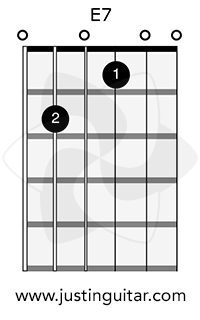
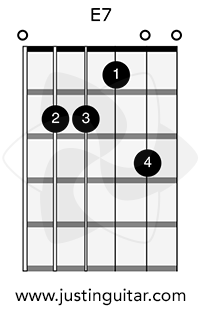
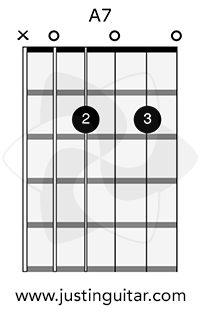

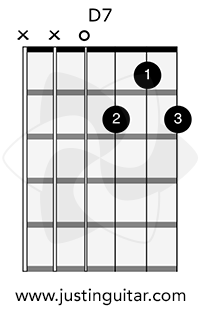
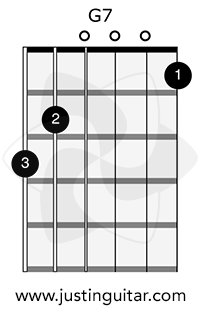
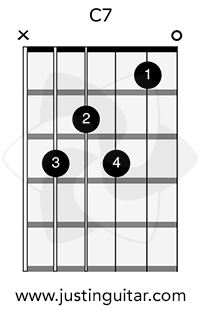
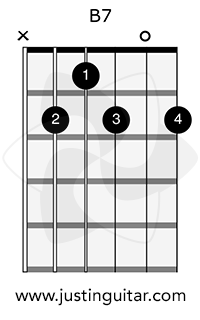
To practice 7th chords - and any other new chords - you first have to memorize them! You don't want to have to look at a chord book to play them. So make sure you spend some time studying the diagrams to memorize all the chord shapes.
Then, I recommend spending a bit of time practicing each one of the chords. Make sure that you can get all the notes ringing out nice & clear. Some of these are slightly stretchier than others. Be patient with yourself if they aren't perfect right away!
For your first practice sessions of Module 13, you might want to play all the grips through. Get used to how the different shapes feel on your guitar neck!
Then, you can spend some time doing One Minute Changes between them. Focus on the ones that challenge you the most! Here are some common changes that will be helpful to practice:
Once you're confident with that, practicing doing Perfect Fast Changes exercise between them. This will be an excellent way to develop these grips. You'll want to make sure the chords are ringing out nicely and that your fingers aren't muting any open strings!

Unlock your potential with our revamped Solo Blues guitar lessons—now featuring an innovative play-along tool that gives you instant feedback right on JustinGuitar!